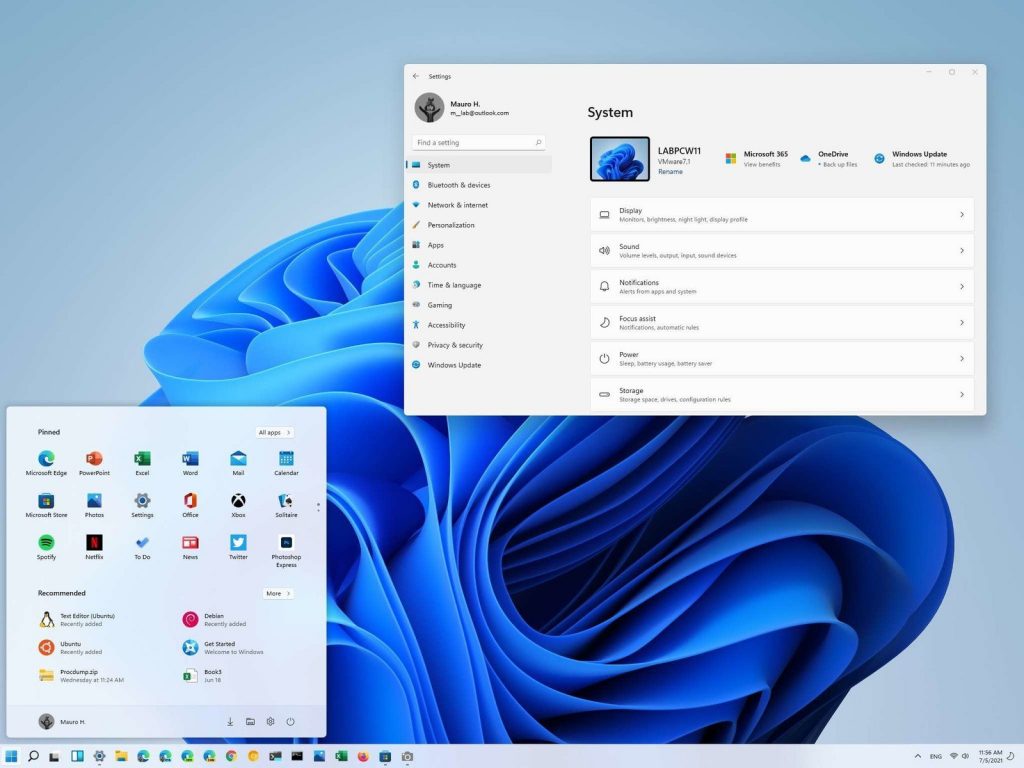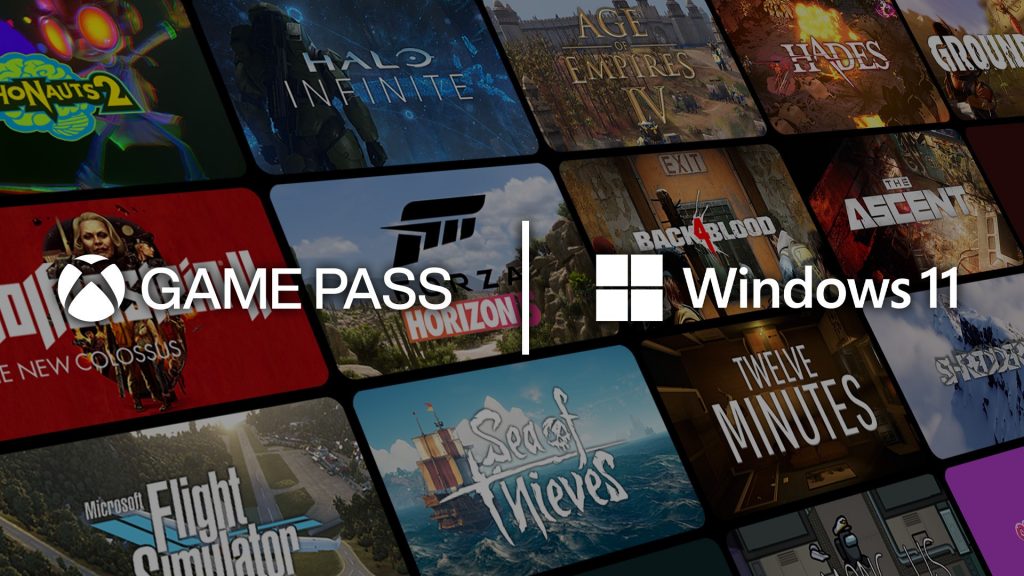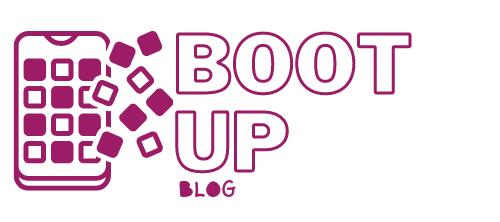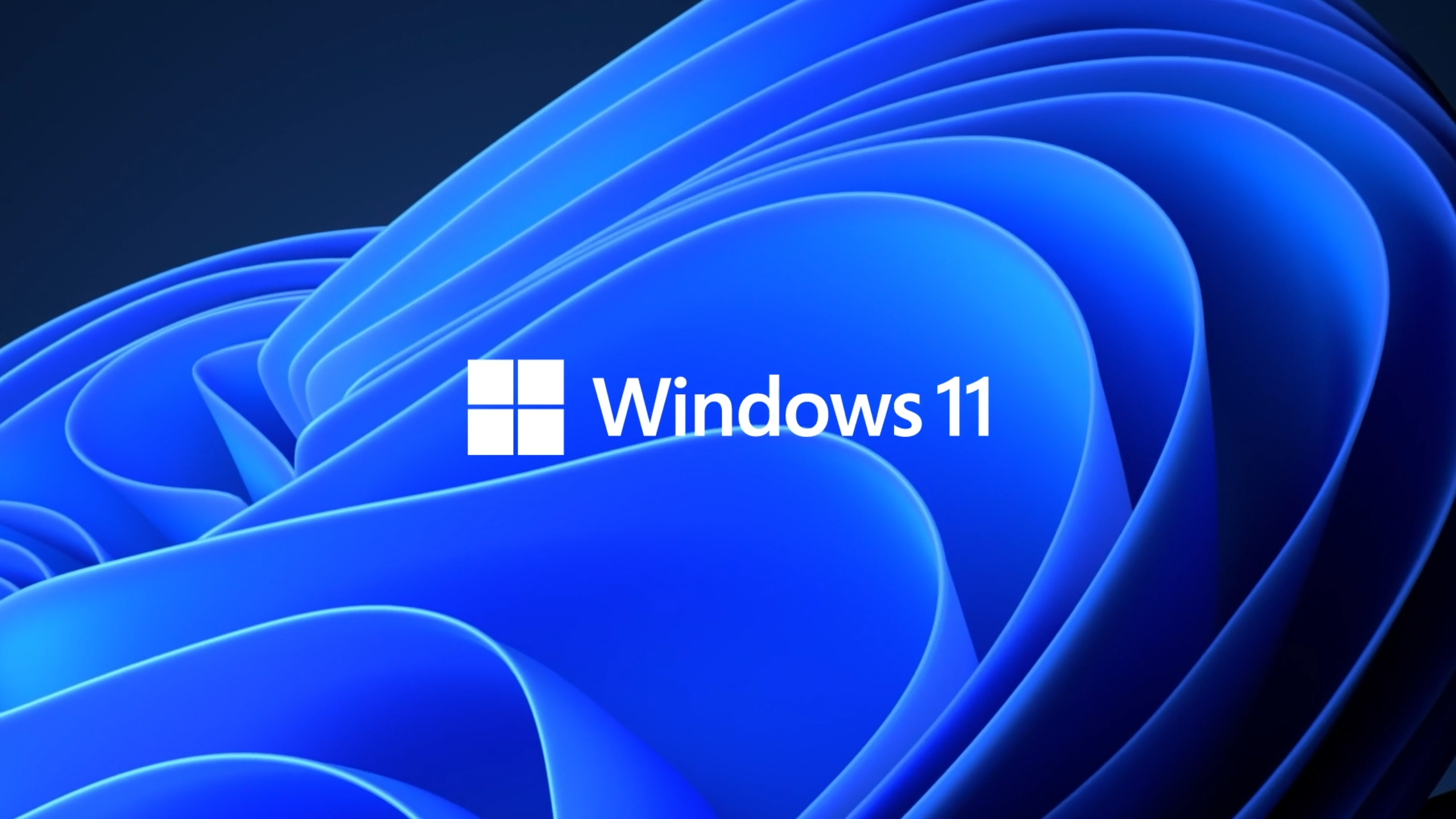Windows 11 was unveiled at Microsoft’s big event on June 24, with a confirmed release date of October 5. There’s still some confusion as to the system requirements for Windows 11 needs. mainly due to a component called TPM, but it looks as though Microsoft are looking into this as the final release nears.
While we wait for its October release, here’s everything we know about the release date, the new features, and more for Windows 11.
Windows Will Have a New Look
The taskbar icons are now indeed centred the way they are in Chrome OS, but the Start button is still to the left of the other app icons. Windows will get tightly rounded corners, similar to macOS. More subtle are the transparency, animations, and clean icon design that represent an evolution of the Fluent Design system, which, though promised, never fully took over Windows 10. Dark mode, too, will look more consistent.
Widgets
Widgets are making a comeback! Apple recently bolstered widgets in iOS 14, and Microsoft dabbled in bringing back desktop widgets with the News and Interests panel that recently arrived in Windows 10. But Windows 11 widgets will take that idea a step further. Microsoft’s blog on Windows 11 notes that the new widgets will deliver a personalized feed powered by AI and use Edge for rendering. The new widgets can be expanded to fill the whole screen, and third-party content providers can take advantage of this new palette.

Redesigned Settings App
Microsoft didn’t spend a lot of time on the new Settings app, but it looks great in the sample screenshots. Members of the tech community are hopeful that Windows 11 will spell the end of those ugly old dialogs that cropped up for certain settings and that we can do everything in the new interface.
Snap Layouts
Windows has long been unmatched in its ability to position, size, open, and close windows on the screen to your taste. macOS very recently added the ability to set windows to take up exactly half the screen, something Windows users have had for years.
Now comes the latest windowing convenience: Snap Layouts. These let you choose from a selection of window layouts, easily populating them with app windows of your choice. Maybe even more important than the extra layout choices is that these layouts are saved and accessible from the app taskbar icons so you don’t have to re-create them after doing something else on the PC.
Multiple Desktops
New for Windows 11 will be the ability to set a different background for each virtual desktop. This makes a lot of sense: Most people use one desktop for work stuff and another for personal. The snap layouts mentioned above can be used on each desktop.
Teams Will be Integrated
One of Microsoft’s biggest hits over the last has been Teams, its videoconferencing and messaging tool. The app went from having 20 million users in 2019 to 145 million in 2021. The company wants to bring it beyond the workplace, though, and a button will give easy access to it in Windows 11. Teams is cross-platform, running on Android and iOS as well as Windows. It can also work with SMS for those who don’t have the mobile app installed.
Tablet Mode and Docking
With Windows 11, when you plug your laptop into a monitor, it will remember the last app layout you were using.
The tablet mode will be more similar to the desktop mode than in Windows 10, with subtle changes like more space between taskbar icons. A new stylus will provide haptic and audio feedback, and voice typing keeps getting better.
Android Apps in the Store
Yes, you will be able to run Android apps on your PC! Microsoft beat Apple to this mobile-app-on-the-desktop paradigm, even though Apple controls both its platforms and both now run the same class of CPU. What remains to be seen is how well Android apps will run on the desktop. We’ve seen the spotty performance and appearance of Android apps running in Chrome OS, both owned by Google, so don’t expect perfection in this collaboration of Amazon and Microsoft. That’s because the integration will come through the Amazon AppStore running inside the Microsoft Store app. Note that the Your Phone app will be another way to run apps on the PC—you can use any apps installed on your compatible Android phone.
Other significant updates to the store are that developers will be able to include PWAs (progressive web apps) and old-school Win32 apps as well as the UWP (Universal Windows Platform) apps normally found in the store. Even better for developers: They’ll be able to bypass any fee cuts from Microsoft by using their own commerce engines. Using Microsoft’s commerce entails a still-market-low 15 percent cut.
The store will also sport TV and Movies, which will offer wireless casting to TVs.

Gaming Gets a Boost
You’ll be able to run Xbox Game Pass games and Xbox Cloud Gaming will be supported in the Xbox app on Windows 11. But in terms of performance and visual quality, the update will also add Direct Storage and Auto HDR. The former speeds up games loading from storage to the graphics card. The latter produces a far richer image quality with more colour range and depth.
Faster Performance, More Security
At the What’s Next for Windows event, Microsoft’s Panos Panay said that the OS improvements weren’t just skin deep. He noted that speed improvements are coming to web browsing, signing in with Windows Hello, and waking from sleep. He noted that Windows updates will be 40% smaller and more efficient and occur in the background. More efficient energy use will mean longer battery life. Panay also said that Windows 11 would be the most secure version yet. One sign of this is that the new OS will require PCs to have a Trusted Platform Module 2.0 (TPM) security chip.
When will Windows 11 be released, and how can I get it?
Windows 11 will be available through a free upgrade for eligible Windows 10 PCs and on new PCs beginning October 5, 2021. Microsoft also said it is working with its retail partners to make sure Windows 10 PCs you buy today are ready for the upgrade to Windows 11.

